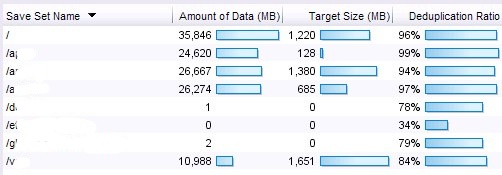When IDATA was beta testing NetWorker 7.6 SP1, my colleagues in New Zealand were responsible for testing the DD/Boost functionality. This, as you may have heard, allows for tighter integration between NetWorker and Data Domain systems, in much the same way that Data Domain has previously integrated with NetBackup.
I’m now doing a DD/Boost implementation, and I’ve got to say, I’m pretty impressed at the integration. At the moment, this is a standalone Data Domain 670, which we’ll be cloning out to physical tape from, so my satisfaction with the integration level has nothing to do with replication. I’ll cover that off when I implement Boost replication.
The first thing that impressed me was that under Boost, the Data Domain device types can be configured with parallelism greater than 1 without affecting the deduplication ratio. That means that a datazone won’t end up with so many devices as it would have to under a normal VTL or ADV_FILE dedupe configuration, which is a nice bonus. (And also better for licensing, too.)
The thing that really gave me a head spin though was the reporting integration. Having done some target based dedupe work before this in NetWorker, I’d been finding it frustrating that I couldn’t drill down and find out what sort of dedupe ratios clients and filesystems were getting. Boost is the answer:
This, as you can imagine, is pretty cool reporting. Not only can you see what systems are getting great deduplication ratios, it’ll make it easy as pie to find the ones that aren’t.
Going up a level, the same applies to clients, too:
When you can isolate clients, filesystems and data that doesn’t deduplicate well, you can do any or all of the following:
- Send data direct to physical tape if necessary;
- Send data to slower, non-deduplicating disk backup;
- Send data to the deduplication device, but immediately clone and stage out as a priority.
I think I’m going to have a long and productive affair with Boost.


I have just implementet boost at our site, and I must, I am impressed by it too.
Backups through a firewall which were running 14 hours, now take the usualy 1½ to 2 hours, after we put a storage node on the client side of the firewall.
Very very nice..
I am however trying not to be to excited, since restores still will take forever 😉
Would be nice one day, to have the same the other way, maybe using the storage node a sattelite replica of the master DataDomain unit. Hosting the data of the clients attached 😉
Oh well, dreams of easy restores…
guess we just have to go around that blasted firewall 🙂